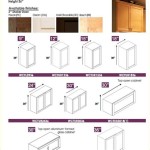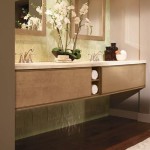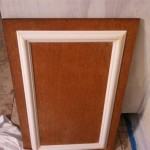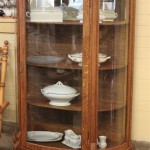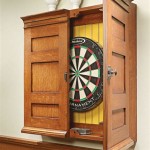How to Build Homemade Cabinets
Constructing your own cabinets can be a rewarding endeavor, offering the chance to customize your space and achieve a unique aesthetic. While it may appear daunting at first, with careful planning, the right tools, and a systematic approach, building your own cabinets is attainable for even novice woodworkers. This guide will break down the essential steps involved in crafting sturdy and functional cabinets for your home.
1. Planning and Design
Before diving into construction, meticulous planning is paramount. This phase involves determining the specific dimensions, style, and functionality of your cabinets. Consider the available space, the intended purpose, and the overall design aesthetic you desire. For instance, if you are building kitchen cabinets, factor in the size and placement of appliances, the desired countertop materials, and the overall layout of the kitchen.
Sketching out a detailed design, including precise measurements and any intricate details, will prove invaluable during the construction process. This visual representation will serve as a blueprint, aiding in visualizing the finished product and ensuring all components are correctly sized and integrated. Utilizing software dedicated to cabinet design can further streamline this stage, providing automated calculations and visualization tools.
2. Material Selection and Preparation
The material choice significantly impacts the durability, appearance, and cost of your cabinets. For a sturdy and classic look, solid wood options like oak, maple, or cherry are excellent choices. These woods offer natural beauty, longevity, and resistance to wear and tear. Plywood, an engineered wood product, is a budget-friendly alternative offering stability and a smooth surface for painting or staining.
Once the material is selected, it's crucial to prepare it for construction. This involves cutting the wood to the desired dimensions, ensuring precise angles and clean edges. A miter saw and a table saw are valuable tools for achieving accurate cuts. Additionally, sanding the wood surfaces to remove imperfections and create a smooth finish is essential for both aesthetic appeal and priming for painting or staining.
3. Cabinet Construction
With the materials prepared, the actual cabinet construction begins. The process involves assembling the cabinet frame, adding the doors and drawers, and incorporating shelves and other internal components. The method employed for joining the wood pieces can range from simple butt joints to more intricate dovetail joints. While butt joints are relatively straightforward, dovetail joints offer superior strength and a characteristic aesthetic.
Utilizing joinery techniques like pocket holes, mortise and tenon joints, or dowels further reinforces the cabinet structure. These techniques enhance the overall stability and ensure longevity. Accurate measurements, precise cuts, and proper alignment are essential during this stage to maintain the integrity of the cabinet and prevent any warping or misalignment.
4. Finishing Touches
The final stages involve adding the finishing touches to complete the cabinets. This encompasses tasks like installing hardware, painting or staining, and applying a sealant to protect the wood from moisture and wear. The choice of hardware, from hinges and drawer slides to knobs and pulls, is dictated by personal preference and the overall design style.
Painting or staining cabinets offers a myriad of options to customize their appearance. Painting allows for vibrant colors and a smooth, uniform finish. Staining, on the other hand, enhances the wood's natural grain and texture, providing a more rustic and traditional aesthetic. Applying a sealant, such as polyurethane or varnish, provides a protective layer that enhances durability and resistance to scratches and water damage.
5. Installation and Refinement
The final step involves installing the cabinets in their designated location. This might require attaching them to walls, mounting them on a base, or integrating them seamlessly into existing cabinetry. Precise measurements and careful alignment are crucial to ensure the cabinets sit flush and level. Once installed, any minor adjustments or refinements can be made to achieve the desired fit and functionality.
Regular maintenance, including cleaning and occasional refinishing, helps maintain the beauty and durability of homemade cabinets. With proper care and attention, these DIY projects can become lasting additions to your home, providing both functionality and a sense of personal accomplishment.

How To Build Cabinets The Complete Guide Houseful Of Handmade
:max_bytes(150000):strip_icc()/CabinetsDwg2-1319246ccb9344b2ba1b390ebfc7c7aa.png?strip=all)
Make Cabinets The Easy Way

How To Build A Cabinet Diy Guide For Beginners

Build Cabinets The Easy Way How To

Diy Built In Cabinet Just Call Me Homegirl

How To Build A Custom Diy Built In Cabinet Angela Marie Made

How To Build Cabinets In Under 30mins The Easy Way

How To Build A Storage Cabinet In 7 Steps Simply Handmade Studios

How To Make A Simple Cabinet Box Sunny Side Design

How To Build Cabinets
Related Posts

